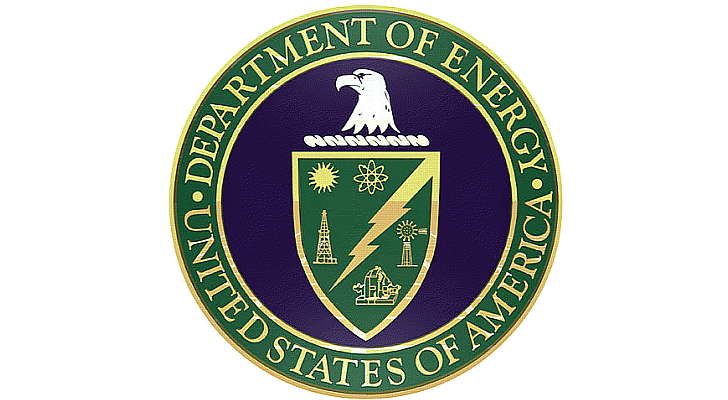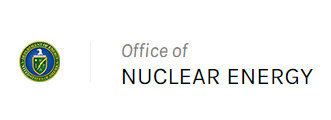Blog
-

Geiger Readings for Jun 03, 2018
Ambient office = 124 nanosieverts per hour
Ambient outside = 59 nanosieverts per hour
Soil exposed to rain water = 81 nanosieverts per hour
Redleaf lettuce from Central Market = 131 nanosieverts per hour
Tap water = 82 nanosieverts per hour
Filter water = 52 nanosieverts per hour
-

Geiger Readings for Jun 02, 2018
Ambient office = 94 nanosieverts per hour
Ambient outside = 104 nanosieverts per hour
Soil exposed to rain water = 121 nanosieverts per hour
Romaine lettuce from Central Market = 60 nanosieverts per hour
Tap water = 89 nanosieverts per hour
Filter water = 84 nanosieverts per hour
Dover sole – Caught in USA = 100 nanosieverts per hour
-

Nuclear Reactors 569 – The U.S. Department Of Energy Is Funding New Projects Under The ARPA – E – Part 1 of 3 Parts
Part 1 of 3 Parts
The U.S. Department of Energy just announced that it was going to spend up to twenty-four million dollars to fund ten projects as part of a new program under their Advanced Research Projects Agency-Energy (ARPA-E) division. The program is called Modeling-Enhanced Innovations Trailblazing Nuclear Energy Reinvigoration (MEITNER). The purpose of the new projects is to develop innovative technologies that can be used in the design of advanced nuclear reactors that are safer and cheaper than the current generation of power reactors. The DoE says that nuclear energy is a “… reliable source of power that complements the country’s diverse portfolio of energy generation sources.”
The U.S. Energy Secretary, Rick Perry, said, “Nuclear energy is an essential component of the U.S. energy mix, and by teaming up with the private sector to reduce costs and improve safety, we are keeping America ahead of the curve in advanced reactor design and technology. These next-generation ARPA E technologies help us maintain our competitive, technological edge globally, while improving the resilience of the grid and helping provide reliable, baseload electricity to each and every American.”
In the U.S., nuclear power supplies about twenty percent of the electricity. All of the current U.S. nuclear power reactors are conventional light water reactors. This technology was first developed in the 1950s and has been steadily evolving since then. The future of nuclear power in the U.S. is uncertain. High costs and a rapidly changing national power grid which includes renewable power sources such as wind and solar have presented new challenges to existing and proposed nuclear power plants.
If nuclear energy is to continue to contribute substantially to the U.S. power equation in the future, the next generation of nuclear power reactors will have significantly lower capital costs for new nuclear power plants and provide what is called “walkaway” safe and secure operation which means that the staff of a power plant could “walk away” from the nuclear plant control room and the nuclear power reactors would autonomously and safely shut themselves down without human involvement.
It is hoped that the MEITNER projects will be able to make use of new designs, new manufacturing processes, and new technologies that will lower expenses and increase the ability of nuclear power to compete in today’s energy market. These enabling technologies will establish the basis for a modern domestic supply chain to support the continued use and growth of nuclear technology.
The MEITNER projects that have been funded are expected to support the creation of advanced reactor designs that will permit lower construction costs and autonomous operating while increasing the safety of the new nuclear power reactors.
The U.S. DoE’s Office of Nuclear energy worked closely with the ARPA-E to develop this new funding opportunity. MEITNER teams will be permitted to access DoE modeling and simulation software and simulation resources. Project teams will coordinate with a DoE-supported resource team of experts from the DoE and DoE’s National Laboratories. Here is the list of new projects that are being funded under the MEITNER program.
Please read Part 2. -

Geiger Readings for Jun 01, 2018
Ambient office = 81 nanosieverts per hour
Ambient outside = 118 nanosieverts per hour
Soil exposed to rain water = 106 nanosieverts per hour
Vine ripened tomato from Central Market = 142 nanosieverts per hour
Tap water = 110 nanosieverts per hour
Filter water = 93 nanosieverts per hour
-

Nuclear Reactors 568 – The U.K. Office Of Nuclear Regulation Working To Comply With The U.K. Regulators Code – Part 2 of 2 Parts
Part 2 of 2 Parts (Please read Part 1 first)
The NERA issued a report in November of 2016 titled The economic impact of ONR safety regulation in which it said that the ONR was an “impressive regulator.” It reported on a number of positive findings including ONR’s current regulatory strategy for Sellafield and the Generic Design Assessment process. However, the report also concluded that there was room for improvement. The NERA report was revised in August and December of 2017. The ONR responded to the NERA report by listing the actions that it was prepared to take based on the reports recommendations.
The ONR said, “Overall we believe that NERA’s report, and the positive engagement with the authors, has enabled us to identify a number of real improvement measures in terms of our awareness of, and approach to, our economic impact on the industry we regulate. Ensuring a safe and secure nuclear industry will always be our overriding priority and we are robust in upholding the law, using our regulatory enforcement powers wherever necessary. Any actions identified in response to NERA’s report are consistent with this priority.”
The NERA report laid out five areas of consideration for the ONR. First, the report said that the ONR should encourage more external comments and comparisons. Second, the report suggested that there should be more effective promotion and monitoring of the Enabling Regulation initiative. Third, the ONR should improve its understanding of the costs of regulatory decisions. Fourth, the ONR should make use of economic advice in the framing and assessment of some issues. Fifth, the ONR should refine its current guidance as far as is practical.
The ONR expressed its belief that, in general, its activities are aligned well with the themes of the Regulators’ Code. These themes include the following ideas for the behavior of regulators: First, regulators should execute their duties in a way that helps those they regulate to comply with regulations. Second, there should be easy ways for those who are regulated to provide feedback. Third, regulatory activities should be based primarily on risk. Fourth, the regulators should share important information about compliance and risk. Fifth, the regulators should make sure that there is clear information, guidance, and advice provided to help regulated parties to comply. Sixth, regulatory activities should be transparent to the regulated.
The ONR said, “In particular our regulatory framework and enabling approach embrace proportionality, our approach with other regulators is highly collaborative, and the publication of our staff guidance for inspection and assessment provides a good basis for openness and transparency.”
The ONR also said that there have been a number of significant improvements such as the introduction of the Security Assessment Principles and the publication of its Risk Informed Decision Making guidance. There will be another update on ONR’s compliance with the Regulators’ Code in 2020. The new update will coincide with the end of its current five year strategy.
Since the U.K. voted to leave the European Union in 2016, the ONR has been scrambling to put in place a set of nuclear regulations that will match the Euroatom regulations in order for the U.K. to be able to purchase nuclear technology and fuel from the E.U.
-

Geiger Readings for May 31, 2018
Ambient office = 141 nanosieverts per hour
Ambient outside = 112 nanosieverts per hour
Soil exposed to rain water = 85 nanosieverts per hour
Barlett Pear from Central Market = 155 nanosieverts per hour
Tap water = 101 nanosieverts per hour
Filter water = 94 nanosieverts per hour
